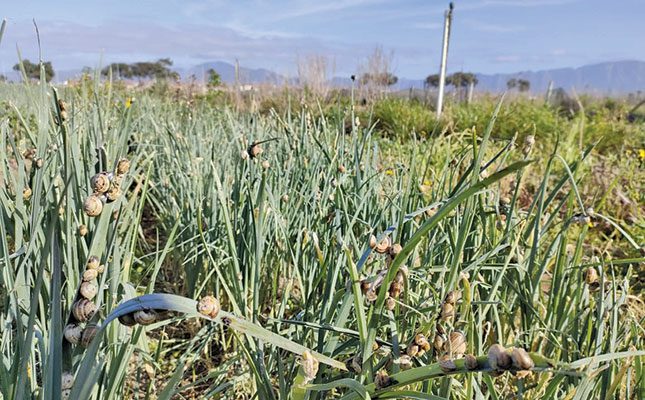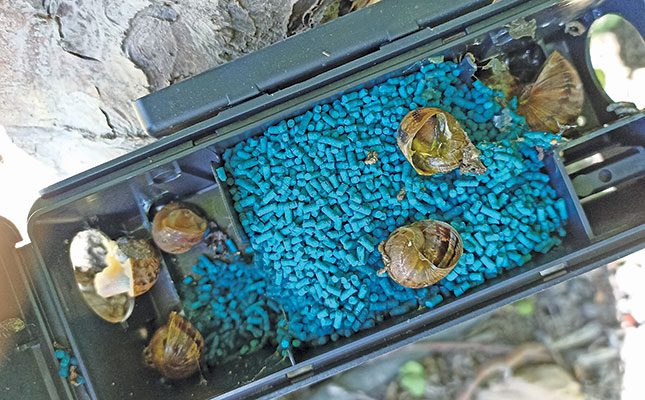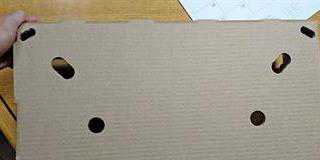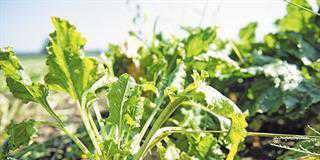
Photo: Arnold du Preez
You’ve said that slug and snail numbers have shot up in recent years, leading to ever-greater damage to crops. Do you know what has caused this problem?
We’ve seen an explosion in snail and slug populations on farms over the past decade or so, resulting in commensurate damage to vegetables, fruit and grain.
Various factors have contributed to the problem. For one, the overuse of pesticides and other chemical products has destroyed the biological equilibrium on many farms. As a result, fewer natural predators, such as snakes and frogs, are available to keep slug and snail populations in check.
There are also fewer microbes in the soil to feed on slug and snail eggs. Paradoxically, the switch to minimum- and no-tillage farming has exacerbated the problem, as these practices don’t destroy the slug and snail populations in the way that ploughing does. In addition, cover crops and mulches help to create a favourably cool habitat for them.
Many people think that using wood chips or other coarse mulch can help to deter slugs and snails, but they can slide over a razor blade, so these materials do them no harm.
On top of this, weather patterns are changing. In the Western Cape, for example, rainy days interspersed among the normal hot summer days over the past few years have produced favourable breeding conditions for molluscs.
All of these factors mean that slugs and snails have been able to lay huge numbers of eggs, and without interference.
Do molluscs have any inherent breeding advantages?
Most snail species are hermaphrodites, which means that each individual has both male and female sex organs. With every snail being the potential mate of another, the population can reproduce rapidly. Some species of snail can even self-reproduce (asexual reproduction).
In addition, the eggs hatch only when conditions are favourable, and this can be any time between seven days and three months or longer after being laid.
How effective are molluscicides?
There are three major active ingredients available on the market at the moment,
but farmers and chemical consultants have reported resistance. I’ve even seen snails consume pellets, show signs of being unwell for a few days, then recover completely. The offspring of these snails are likely to be completely immune against pellets.
Are there any new chemicals on the horizon that could change this?
Many of the active ingredients in molluscicides used in South Africa are being phased out internationally because of concern over their environmental impact. Fortunately, they’re being replaced by more environmentally friendly products. What’s really needed are products that are effective against certain species under specific conditions.
Garlic and salt have long been used for control of slugs and snails. Are these methods ineffective?
Garlic can be used as a deterrent, but it doesn’t work for long. Salt isn’t a good idea, because of its negative impact on the environment. In addition, it doesn’t attract molluscs.

What type of damage do slugs and snails cause?
They feed on vegetable and grain seedlings, and slugs also burrow into the ground to feed on seeds. A single slug can hollow out as many as 50 seeds in a single ‘sitting’.
Soft-leaved crops such as beetroot, cabbage, Swiss chard, lettuce and spinach are particularly vulnerable, and can end up damaged and unsuitable for sale. Plants may even be completely destroyed.
Molluscs are also a threat in orchards and vineyards, where they can damage
young plants and feed on the fruit. They’re especially attracted to orchards under irrigation, shade netting and cover crops. I’ve seen orchards where these pests spend all their time on the trees.
Is citrus targeted by these pests?
Very much so. I know of a farmer who lost half his Nardorcott [mandarin] orchard because of snail problems. In fact, citrus extract is often used as an attractant in order to trap and destroy molluscs.
How serious is the slug and snail problem, and what needs to be done to solve it?
It’s a nightmare. I’ve been involved in the control of these pests for over 16 years and receive daily calls from farmers and chemical consultants who are at their wit’s end because they no longer know what to do about the problem.
These pests could become a threat to food security within the next three to five years if there isn’t a drastic change to our approach. Farmers have to start off by monitoring their orchards and lands as they do for other pests, such as false codling moth.
They have to put out baiting stations so they can gauge the size of the problem and identify the species of slugs or snails. This in turn will determine the molluscicide and dosages used.
Scouting will also help with identifying those parts of the orchards or lands that need extra management.
In addition, farmers need to revert to management practices that create a healthy ecosystem with sufficient predators to keep slug and snail populations in check.
What are some of the mistakes made in slug and snail management?
I’ve seen farmers administering the wrong dosages or applying the product at the wrong time. Some even burn their lands to get rid of these pests. This is a big mistake, as it destroys everything they’ve worked so hard to achieve with conservation-farming practices. It can take five or six years for a land to recover from such an intervention.
Strip burning – that is, burning the land in sections – can perhaps be considered better than simply burning everything at once, but it still destroys many beneficial organisms, and it’s also very labour-intensive.
If the problem is severe and there’s no alternative, a farmer should rather carry out a light tillage or pull a tyre on its side over the land during the heat of day to expose the eggs. This will slow reproduction of the pest.
What should fruit producers do to combat slugs and snails?
Baiting stations generally work well in orchards, although it takes a long time to bring slug and snail populations under control. Unfortunately, baiting stations are ineffective with cone snails, as these molluscs lack a sense of smell.
Slug and snail populations should be monitored all year round. Many fruit farmers neglect to do this during the busy picking season, but this is when snails and slugs are at their most active because of the abundance of fruit waste.
How do farmers know when snails or slugs have built up resistance to an active ingredient?
We get many phone calls from farmers who say that the products they’re using aren’t working. This is either because the slugs or snails have built up resistance to the active ingredient, or because the molluscicide is being used incorrectly.
Depending on the product, the molluscicide should be applied when slugs and snails are most active. This is usually when it is cool – at night or in the morning.
A molluscicide that has to be ingested shouldn’t be applied during the breeding season, as slugs and snails don’t feed during this stage of their life cycle.
As with any pesticide, the farmer should follow the usage instructions of the product with care.
How do farmers know when slugs and snails are breeding?
When they’re breeding, they’re inactive, so you need to look for signs of movement and the arrival of more slugs and snails in the traps. The pests’ gathering places should be encircled with the molluscicide pellets to kill the slugs or snails once they start moving. Alternatively, the pellets can be placed inside the traps.
If the problem is so serious, why don’t people farm snails and slugs?
Snail-farming methods have improved greatly over the past few years, turning it into a lucrative business. Most of the snails are exported to Europe and the US. The problem, however, is that only certain species are in demand.
In the meantime, farmers simply have to become more proactive in their efforts to control molluscs. In the many years that they’ve struggled against these pests, the problem has only worsened. We need to up our game if we want to regain control of the situation.
Email Arnold du Preez at [email protected].











